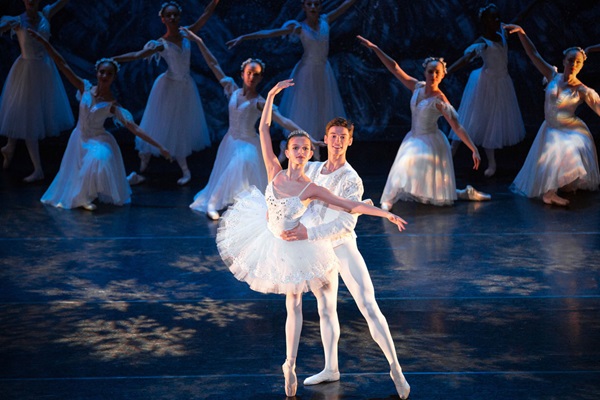The popularity of the ballet “The Nutcracker” skyrockets during Advent and the Christmas season because of its pageantry, dancing, and timeless classical music. But have you ever wondered what the story is really all about? If so, you’re not alone.
The story is much clearer, says the Reverend Matt Rawle, the lead pastor at Asbury United Methodist Church in Bossier City, Louisiana, if we use a “lens of faith” to look more closely at the characters and the action.
The story actually resonates with strong parallels to our faith and helps us prepare for Christmas, writes Rawle, whose new book and Advent series was published in 2018 by Abingdon Press.
The Gift of the Nutcracker

The Advent Study Series "The Gift of the Nutcracker" by Matt Rawle, published by Abingdon Press, is available as a set or individually from Cokesbury.com.
The series includes a leader's guide with complete session plans, a paperback book, individual streaming sessions (sample clip below), a DVD, and a children's leader's guide.
We can see many parallels to our faith in what happens to the characters. Clara, the main character, is at that “in between” age and always waiting: waiting to grow older, waiting for someone, waiting to understand the world. She is loved dearly by her peculiar godfather who gives her a special gift – the Nutcracker. After the Nutcracker later comes to life, he battles the evil Mouse King, only to die in battle. However, the loving godfather resurrects the Nutcracker, who then takes Clara to his kingdom to the acclaim of many who have awaited his return.
Sound familiar?
“The Gift of the Nutcracker explores (many) Christian themes throughout the four chapters,” writes Rawle, “each focusing on a particular character from the story. In turn, each chapter applies the lessons learned from the story to help us better understand our walk as Christians and relationship with Christ.”
Like Clara, we Christians understand what it’s like to live in an “in between” time of life. We live in this world, raise families, enjoy traditions, and celebrate holidays and holy days. Yet Paul encourages us to not be conformed to this world, but be transformed by the renewing of your minds.” (Romans 12:2). Like Clara, we find that it is often in these periods of waiting that we see the most growth in our lives.
Or consider Drosselmeir, Clara’s peculiar godfather, who gives her the Nutcracker. He also produces a puppet show that foreshadows future events, though it doesn’t disclose everything that will happen. If we are watching the play for the first time, we may not know this. But if once we have seen the play in its entirety, we know what events lies ahead.
Similarly, the Scripture passages during Advent foretell the coming of the Messiah, God’s gift of his only begotten son. We know now that Jesus is the King of Kings, but people in the first century did not know the full story. “Scripture doesn’t tell us everything we want to know,” writes Rawle, “but it does reveal everything that we need.”
The third section of the book looks at the Mouse King, the villain of the story. We’re not quite sure who he is or why he wants to battle the Nutcracker, but Clara fears him from the start.
Are there times when fear and suspicion are the dominant feelings in our day? Are we constantly fighting battles, both real and perceived ones, throughout the day? Clara finds comfort when the Nutcracker is by her side, but what about us? Do we truly feel peace and the hope for a new life by realizing that God will never abandon us?
The final section of the book deals with the Nutcracker, whom Rawle calls “the greatest gift.” When Clara receives the Nutcracker at the Christmas party, she doesn’t know what to think about the gift. It wasn’t something that she wanted, but she found out later that it was a gift that she needed.
In one sense, Jesus is the gift we wanted, but we are surprised to find that he is also the gift we need. Jesus calls us all to turn the other cheek, welcome our neighbor, feed and clothe the poor, even carry his cross. If we are to welcome the Christ child into our lives at Christmas, we must also embody his teachings and act more like Jesus during the rest of the year.
Rawle summarizes the connections between the story and our faith journey in this way: “Much like our journey as Christians, Clara’s story is one that begins with uncertainty, fear, and struggle, yet ends with comfort, hope, and joy. Both The Nutcracker and the Advent story unfold just as we know they will, but not without the hope and anticipation that always accompany both the dance and the season.”
So the next time you attend a live performance of The Nutcracker, or watch it on TV, be sure to use a "lens of faith" and walk with Christ alongside Clara and the Nutcracker.
Christopher Fenoglio is a freelance writer in Nashville, TN. Media contact: Joe Iovino.
The Rev. Matt Rawle is the lead pastor at Asbury United Methodist Church in Bossier City, Louisiana. Read more at http://mattrawle.com/





